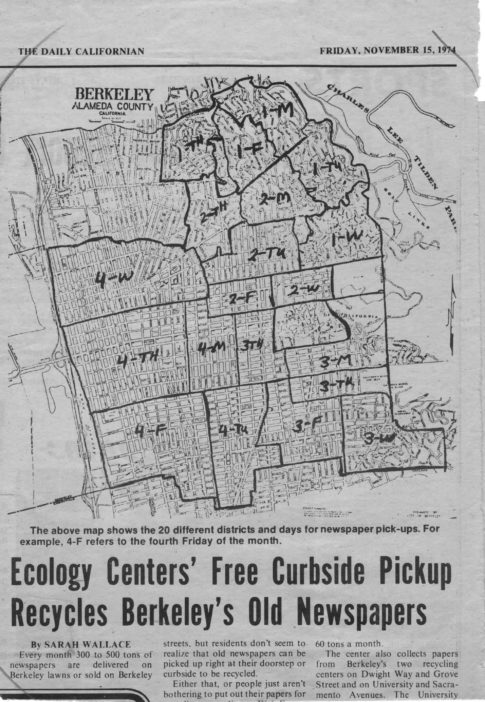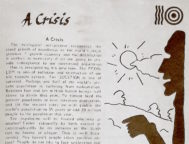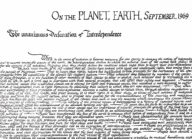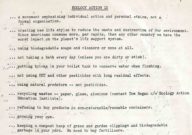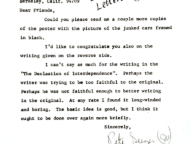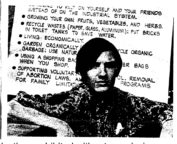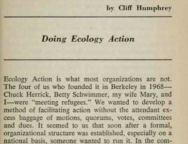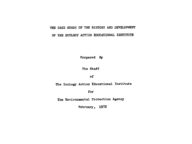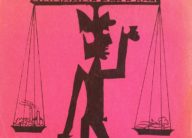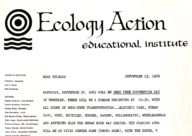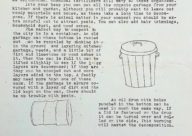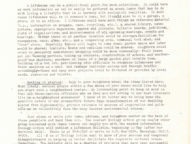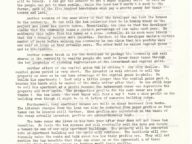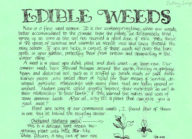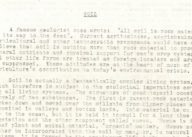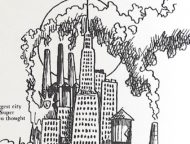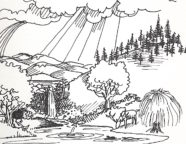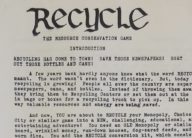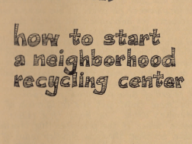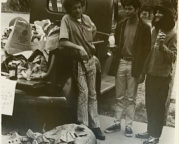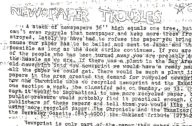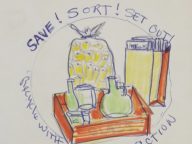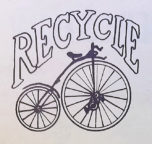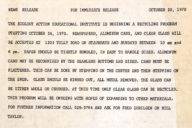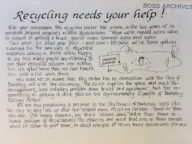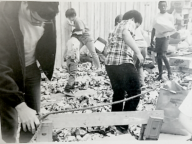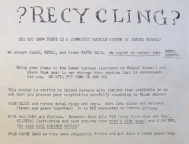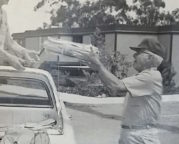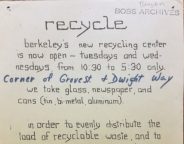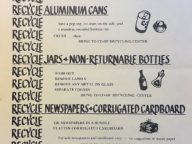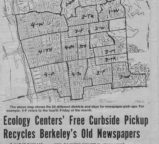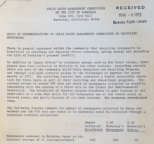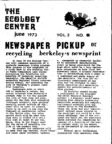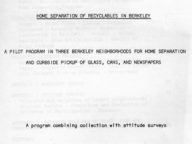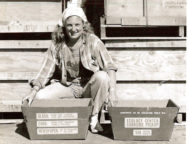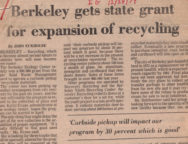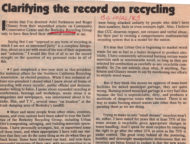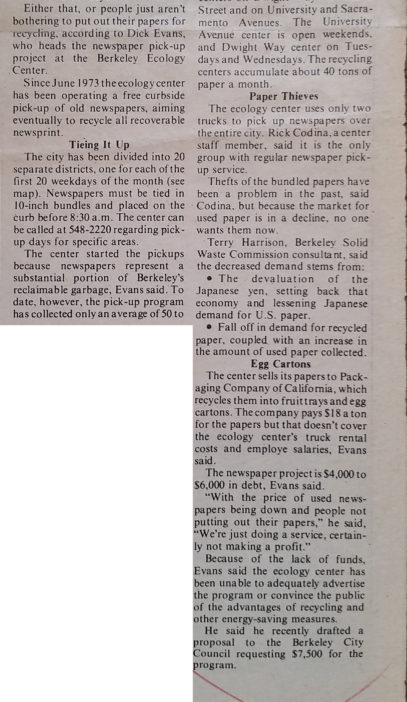
For more than a year, the Ecology Center had been running a program that had yet to take off. The program was in debt, with no money for advertisement or education, so this Daily Cal article addressed that need by alerting the public to the free curbside service.
The Ecology Center began curbside with newspapers because it was a “substantial portion of Berkeley’s reclaimable garbage”. Ecology Action believed newspapers took priority as well. It is hard to imagine how much newspaper was generated in the 70s when people hardly read the paper at all now, choosing technology instead. In 1972, newspaper stands were a common sight and middle class households received at least one newspaper daily. All that paper was thrown away. The Ecology Center offered an alternative, but it wasn’t the first or the only organization to do so, as we can see in this city report.
The city report of March 1973 estimated that 475 tons of newspaper could be picked up every month with a sustained program, but the article reports the Ecology Center was only collecting 100 tons a month, in collaboration with the two recycling centers of Berkeley. What was going wrong? Was there enough room for multiple recyclers to operate and go after the same materials (newspaper)?
Though the Ecology Center, a non-profit, was losing money with this operation, they felt an ethical responsibility to continue the program.
